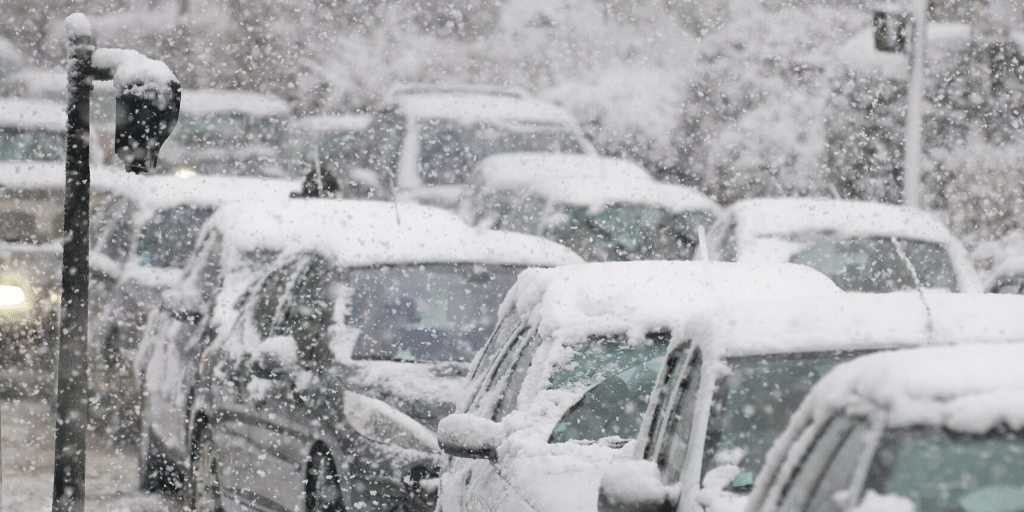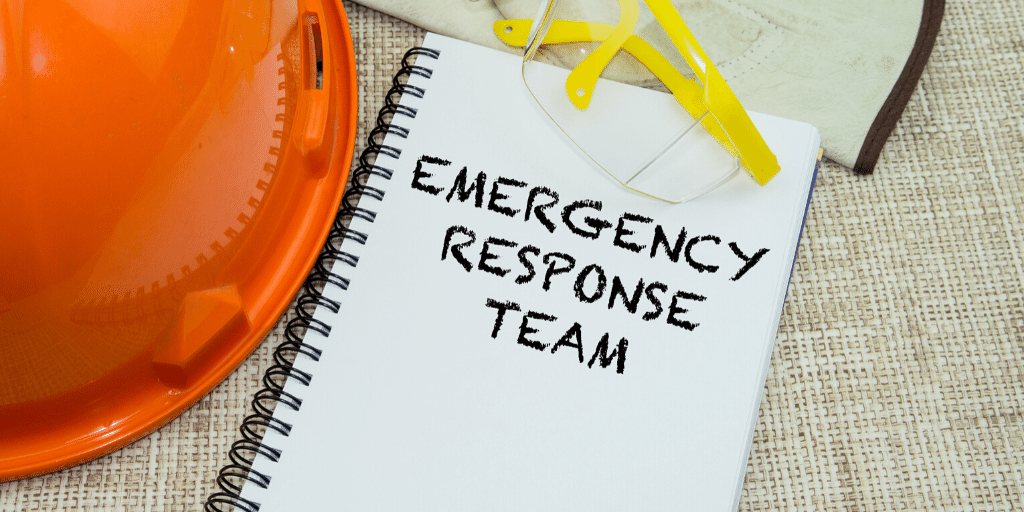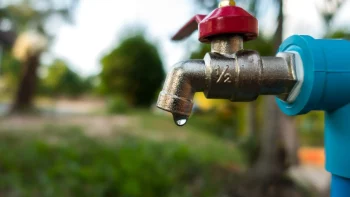How to Create a Crisis Communication Plan
Eight steps to build an actionable, detailed emergency communication response plan.
Your worst nightmare is that a disaster strikes your community—a flood, a bridge collapse, an act of terror. They are all fears that keep you up at night. Are you prepared to act fast enough? Do you have the infrastructure, staff, and planning in place to ensure prompt, informative communications that will reach as many citizens as possible? Don’t wait for a disaster to occur to test your communication plan. Be prepared in advance so that if the worst-case scenario occurs, you can step into action without hesitation or fear. Read on to learn where to start when building a crisis communication plan.
How to Create a Crisis Communication Plan
- Step 1: Start by Identifying Your Audiences
- Step 2: Build Contact Lists and Establish Communication Channels in Advance
- Step 3: Make Sure You Have a Way to Reach Visitors
- Step 4: Coordinate Planning Efforts with Safety Officials
- Step 5: Establish Infrastructure and Training for Communication Triage
- Step 6: Include Social Media in Your Multi-Channel Communication Strategy
- Step 7: Prepare Your Team
- Step 8: Craft Your Message
- Bonus: Crisis Communication Plan Example
Step 1: Start by Identifying Your Audiences
While your immediate concern is likely for the safety of your citizens, start your crisis communication planning by identifying all the audiences that you will need to communicate with if a disaster occurs. This list should include:
- Citizens – Think about triaging communication to residents based on their proximity to the incident. For example, you may not need to communicate with all citizens in your county about a water main break, but you should communicate to everyone in and traveling to the immediate area.
- Visitors – Don’t forget non-residents who happen to be in the area when a disaster strikes. They are just as much at risk of inclement weather and threatening situations.
- Local Businesses – Local disasters may have specific consequences for businesses in your community. As organizations that play an essential role in your municipality and that have critical interactions with citizens, they will need to understand what events are occurring, how events may impact their business, and the role they can play in helping to manage the crisis and recovery efforts.
- The Media – Your local and regional media outlets will want to know what events have occurred and what your administration plans to do to manage the situation through to the recovery process. The media will also be instrumental in helping you communicate potentially life-saving directions and instructions to citizens. Make sure contacts at all your local media outlets are part of your communication plan. You may also want to create a shortlist of members in your administration who can speak directly with the media. These individuals should receive advanced crisis communication training, be familiar with crucial communication messages, and be introduced to media contacts so that reporters know whom to contact with questions or for comments.
Step 2: Build Contact Lists and Establish Communication Channels in Advance
When a disaster occurs, it’s already too late to try to obtain contact information for all the audiences listed above, especially citizens. Start preparing for a potential emergency now by encouraging citizens to opt-in to receive emergency alerts. A government emergency notification system enables you to accept citizen opt-ins and utilize the same tool to create and distribute emergency alerts to multiple channels, such as SMS/text message alerts, emails, and voice messages.

Step 3: Make Sure You Have a Way to Reach Visitors
Make sure your communication plan includes a strategy for reaching visitors in the area—non-residents who wouldn’t have signed up to receive emergency alerts. Your local media outlets will offer a channel to help reach visitors. Also, consider a strategy to distribute messages to digital road signs in your community.
If you implement an emergency warning system, be sure to choose a solution that integrates with the Integrated Public Alert Warning System (IPAWS). Created by the Federal Emergency Management Agency (FEMA), IPAWS leverages national emergency communication channels to provide area-specific alerts in times of emergency. It’s capable of sending notifications to all cell phones within a specified area without being delayed by network congestion. It can interrupt local TV and radio broadcasts to share essential announcements. It can even post notifications to digital road signs and various other locations instantaneously.
Step 4: Coordinate Planning Efforts with Safety Officials
Make sure your communication plan includes contact information for local public safety officials and a strategy for who is responsible for communicating with them. Work with your local safety officials in advance to co-create protocols and procedures for how best to work together to deliver vital safety information and instructions.
Step 5: Establish Infrastructure and Training for Communication Triage
Once you have established your audiences, and have planned your communication channels, you can put together a communication triage strategy. Be sure to include the following elements:
- Call center staffing – Expect your administration will receive a higher than average volume of calls from all your audiences. Create a plan to staff your call center accordingly, or even redirect incoming calls to a second call center if possible.
- Ensure key staff is trained in updating your local government website – Your municipal website will be one of the first places that citizens, visitors, and the media go to find the latest information regarding the current disaster. Make sure key members of your emergency communication team are trained on how and where to publish emergency alert information on your municipal website. When a disaster strikes, and every second counts, you can’t waste time trying to make updates to your municipal website using a cumbersome, complicated content management system (CMS). The ideal website management solution will allow you to publish emergency alerts from a mobile device since you never know where you’ll be when an emergency occurs.
- Ensure that you have an internal communication strategy – A plan for external communications is essential, but don’t overlook the importance of building a plan for internal stakeholders to communicate with one another as well. In a crisis, local government administrators need to be able to alert and convene key personnel instantly. Be sure your communication plan can be implemented even if the disaster has disrupted cell service. A valuable emergency notification system will include an integrated conference bridge that will allow you to connect decision-makers on a unified call within seconds to enable time-sensitive next step planning.

Step 6: Include Social Media in Your Multi-Channel Communication Strategy
Social media is a critical channel for delivering real-time urgent news and emergency notifications, not only because citizens spend a considerable amount of time utilizing social media each day, but because citizens now expect to learn about breaking news from social media first. According to Insignia Communications, social media is changing the way that consumers learn about breaking news because it:
- Often breaks on social media first.
- Crosses geographic boundaries more quickly.
- Is informed by multiple firsthand, though often unofficial sources.
- Is commented upon by active social media users, which further shares and distributes the content.
Even journalists now watch social media to identify and report breaking news stories. According to Insignia Communications, 77 percent of journalists say social media is important to them for learning about potential stories more quickly, and the same percentage say social media is important in reporting stories more quickly.
Key Platforms
Around 69 percent of U.S. adults use Facebook, and around four-in-ten U.S. adults get news from Facebook, according to the Pew Research Center. Facebook adds 500,000 new users every day, the equivalent of 6 new profiles every second. Potentially the most impactful social network used by your citizens, Facebook users spend an average of 38 minutes per day on the social networking site. That means public safety communicators can leverage Facebook as a tool to effectively share relevant, urgent, breaking news, or local alerts.
During an emergency, use your local government’s Facebook as a source of reliable news, instructions, and resources, especially since it’s easy to post text, images, photos, maps, links, and downloadable content. Facebook also offers built-in functionality that allows families to locate loved ones and allows individuals in the crisis area to mark themselves as safe, making it one of the first places that people will go for news and personally impactful information during a crisis.
X (formerly Twitter)
Twelve percent of Americans get their news from Twitter. Those who typically engage with Twitter are most likely to use the platform to comment on, or react to, breaking news. For this reason, Twitter serves as a sort of echo chamber, meaning that when news breaks, whether it be local news, national news, industry-specific news, or breaking, emergency news, a user’s Twitter stream is likely to include a long list of tweets from users all of which are sharing, or reacting to, the same story.

Step 7: Prepare Your Team
- Create Guidelines. Develop messaging and channel-specific content guidelines, policies, and protocols for all staff members who will be assisting with communications before an event occurs.
- Build a Team. Even if you regularly only have one staff member in charge of managing messaging channels for your local government, have a plan for a small team to assist during a crisis. For example, appoint one staff member to post updates, one to answer questions from the public and the media, and another to fact check information and correct rumors.
- Conduct System Training Now. Familiarize yourself with social media platforms, social listening, and mass notification tools before a disaster occurs so that you are prepared to act quickly.
- Civic Tip: Click here to learn how to create a community emergency response team.
- Collaborate. Establish partnerships with local and national emergency response teams to share information and help spread joint communications.
- Craft Templates in Advance. Create pre-written communication messages for possible emergency events, especially weather events, that can be distributed quickly. A mass notification solution that offers templated messages can help.
- Utilize a Government Content Management System (CMS). Choose a website solution with an integrated emergency warning system that allows you to send critical communications to all your social media channels in a single step.
- Ensure Mobile Capabilities for Administrators. Emergencies don’t just strike Monday through Friday from 9 – 5 while you’re sitting in your office, so use a CMS that enables you to craft and send messages from a mobile device.
- Assess. When the crisis and immediate recovery period have ended, take time to assess what went well and where you can improve so that you can plan accordingly for future unexpected events.
- Ensure Multilingual Translation Capabilities. Especially if you know that a significant portion of your citizens is comprised of non-English speakers, ensure you have technology tools available to enable citizens to consume content in their preferred language.
Step 8: Craft Your Message
- Be Accurate. The most important thing is to release the correct information. Even if it means a short delay, make sure that you validate all sources of information and that there are no errors or inconsistencies in your message.
- Keep Messages Short and Actionable. Do not overwhelm readers with superfluous details or attempt to cram too much information into each communication. Instead, focus on the most critical information and provide succinct, actionable instructions. Link to more detailed content, such as emergency evacuation maps or shelter lists.
- Be Specific. Give citizens specific feedback, such as the location of emergency shelters or road closure updates.
- Stay Calm and Carry On. Make sure the tone of all communications is calm and informative.
- Leverage Hashtags. On social media communications, include hashtags to amplify the reach of your message to non-followers (e.g., #HurricaneMartha).
- Share Trusted Resources. Share and repost updates from other trusted organizational partners.
- Review Scheduled Communications. Turn off scheduled social media posts and emails that may be out of sync with the unexpected disaster. Your citizens will be visiting your social profiles to obtain emergency response information and may find a scheduled message about an upcoming holiday parade out-of-place.
- Send Updates Frequently. One of the most significant benefits of social media is its immediate impact. Citizens will be looking for continual updates, so keep emails, tweets, posts, and news releases of valuable news, information, and instruction coming frequently.
- Share Updates Consistently. Use the same messaging strategy across all communication channels to mitigate the risk of mixed messages.
- Stay Vigilant. Continually monitor news, third-party media outlets social media to stay in contact with impacted residents and maintain awareness of developing issues or needs.
- Continue Communicating Through the Recovery Period. Continue to share updates even when an event has ended. Your citizens will be just as interested to learn about your community’s recovery and clean-up progress.
Bonus: Crisis Communication Plan Example
By defining your audience, planning your communication channels, collaborating with emergency personnel, creating a triage plan, and crafting your message, you’ll have built the foundation for a crisis communication plan that will keep your citizens informed and safe in the event of a local emergency.
Free Download: Crisis Management and Communications Planning Template


